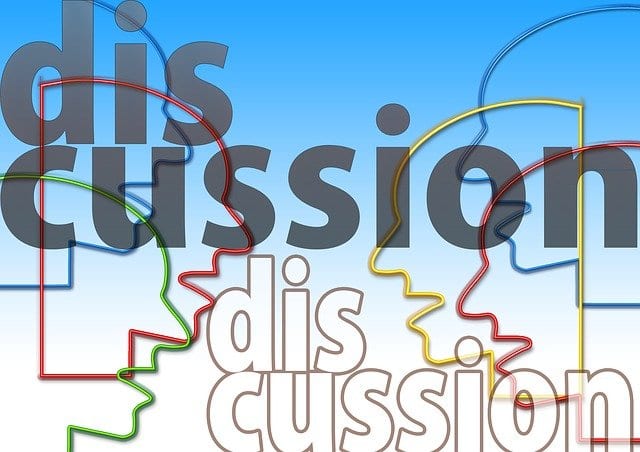Managing Board Conflict
There are two sources of board conflict. First there is emotional conflict that can arise from a sense that some members of the board are not performing or that board meetings are poorly run.
This is different to creative conflict which can arise when board members have alternative visions for the future and about how different priorities might be addressed.
Both types of board conflict need to be managed. Emotional conflict can be addressed through effective governance processes. Creative board conflict needs to be harnessed as a vital source of organisational energy.
Many boards confuse and conflate emotional conflict with creative conflict.

Creative Conflict Between the Board Members
Every board conflict is both an opportunity to work on the immediate issue and to learn new norms for addressing whatever the next issue is. Harnessing the full value of creative board conflict is a rare and important source of advantage.
Boards that manage their conflicts for creative advantage will tend to have these characteristics:
They name the elephant in the room: This is about naming the tough points of conflict up front. Most people prefer to avoid them. Courageous conversations require far less courage when elephant-naming is normalised.
When you are on the Board of Directors, you must model the behaviour of naming sensitive issues that simmer under the surface in the Board Meeting. Make it part of your practice. Learn to do it with courage and grace. If you do not, the chances are no one else will.
Contact Geoff to discuss further.
They protect the dissenters: Boards can benefit from dissenters or someone who is perceived as “difficult”. These are the contrarians who can offer an entirely different perspective, sometimes as momentum seems to be swinging in another direction.
It is important to protect the only ones asking the awkward question that is begging to be asked. The Board Chair must manage these “troublemakers” and protect their space for intervening and speaking up.
They encourage independent judgment: Like most people, directors are likely to prefer clarity, predictability, and certainty. This will be evident if you feel pressure to get closure on a point of conflict without a mature understanding of the implications.
Sometimes you can better manage board conflict by playing with ambiguity, by creating space for the independent judgement of the other board members (especially if you do not agree with them) to filter through. In addressing such situations, a relevant question might be; “What else could we learn if we waited another day, week or month”?
They can comfortably amplify the potential for conflict: The creative potential of board conflict can be fuelled by introducing difficult and reflective questions to the Boardroom. Examples might include:
How is our external environment changing?
How might our internal challenges reflect changes in the external environment?
Can we describe the gap between where we are and where want to be?
What might be the unspoken challenge here?
What are we not seeing?
Many boards fail to normalise time for reflection and learning. In doing so, they narrow their bandwidth to a very task-driven focus. Sometimes this is a sub-cognitive conflict avoidance strategy, where critical issues and opportunities get ignored.
Board self-assessment is a ritual. Whether internally organised or facilitated by an external consultant, it important to assess performance and have dialogue about the individual and collective attributes that make a difference.
Building self-awareness within the Board about its own performance is an area where experienced non-executive directors can contribute valuable insight.
They value the leadership development journey. The organisation will not grow beyond the capacity of the individual directors and the collective board to creatively manage conflict. Managing board conflict is a key leadership competency.
While executive coaching and training can support directors with developing their leadership capacity, nothing beats the development potential of sitting in the fire of a high stakes and conflict energised board meeting.

Managing Board Conflict – the Emotional Quotient
While creative conflict is a resource to be nurtured, emotional board conflict is a distraction that needs resolution. Red flag indicators for dysfunctional conflict situations within boards include:
- Poor board meeting attendance
- Being unprepared for meetings and hence not able to engage in creative conflict.
- Showing up at meetings but avoiding participation
- Poor listening at meetings
- Being overly focussed on operational details
- Being overbearing and taking up too much airspace at the meeting.
- A feeling of distrust between directors fuelled by perceived or real conflicts of interest.
When it comes to managing board conflict of this type the adage of “prevention is better than cure” certainly applies. Thoughtful processes around criteria for director selection are important.
That said, directors are human too, they are error prone, experience emotional flights of fancy and can display mannerisms and behaviours that their colleagues find annoying. Looking towards conflict prevention, the following practices, which should form part of an overall governance policy, are important:
The induction of new directors: The induction process can be tailored to the context of the organisation as well as the experience of the new director. But generally, it is likely to include a letter of appointment, a role description, governing documents, and recent board papers.
The role of the Board Chair: It is part the Chair’s responsibility for managing the board to engage with all the directors and create opportunities for each of them to contribute, especially on matters that are a source of conflict.
The Board Chair can model a behaviour of being relentlessly honest and open. This involves sensing and naming difficult feelings or signals of underlying conflicts in the meeting and on the spot.
Solve the biggest problem: When emotional board conflict is left to simmer, dysfunction will almost certainly emerge in other parts of the organisation. Furthermore, unresolved personal conflicts are highly likely to split to board into cliques, which makes effective board working impossible.
Make it a habit to air all the negative issues, while not dwelling on them unnecessarily.
Creating a Conflict-Safe Culture
Building a culture of straightforwardness where differing opinions co-exit will go a long way towards building a high performance and conflict positive board culture where issues are addressed, and conflicts are resolved.
In conjunction with modelling the culture, managing Board conflict effectively and sustainably requires the support of a robust governance policy.
Read about our conflict resolution services.
Read about the steps to managing conflict in the workplace.
To discuss these issues, schedule a no-obligation conversation with Geoff.
